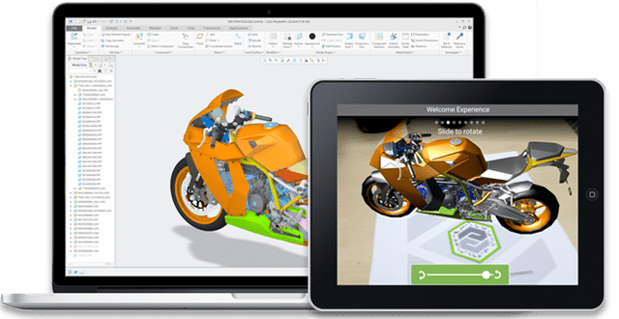
There is a common challenge affecting many companies’ ability to compete effectively within their industries today, and that is using the wrong CAD Software.
Although many companies prefer tools that are easier to use or very inexpensive, they can end up costing businesses more in time and money down the line trying to rectify errors.
Here are 6 capabilities in a professional CAD tool that successful design and engineering teams couldn’t be without!
#1 Parametric Modelling
When working with complex models, the ability to modify one part and then related parts getting automatically updated is a major time saver! Revisions to models and changes throughout the development cycle are extremely common, so having the ability to react quickly to these changes is critical to any business.
#2 Freestyle Modelling
Many businesses want the ability to design multiple concepts with free-form surfaces, allowing flexibility and the creation of beautiful shapes, whilst maintaining the discipline of Parametric modelling. This is one of the benefits of having a CAD tool with freestyle modelling capabilities!
#3 Simulation
The effects of a product recall for a business can be catastrophic, so discovering issues with your products early-on in the process is key. CAD solutions that provide integrated Simulation tools to spot design flaws and design issues, allow users to make edits and modifications to designs before they leave the desktop! This also results in reduced cost and time associated with prototyping.
#4 Skeleton/top down modelling
Large and complex models usually require multiple engineers to work simultaneously, however this is only really effective when the risk of undoing eachothers work is eliminated. Inevitably, changes to a model will be required after the team has started work on it which complicates matters even further. Top manufacturers solve these problems by creating a high-level central definition of the overall product using top-down modelling methods. These capabilities can only be found in professional CAD tools.
#5 Design for downstream
The tools used by service teams, manufacturing and assembly should be the same tools used by the design team to prevent everyone recreating models in their own tools. End of the line manufacturing processes are visualised by CAD solutions to help specify the downstream operations. The close integration between design and manufacturing saves teams numerous hours of rework and reduces the risk of error. Furthermore, with new technologies such as IOT (Internet of Things) being integrated into CAD, companies are able to create smart connected products along with collect and report valuable product data.
#6 Multi-CAD capability
CAD solutions with multi-CAD capability is the best option for a design team who works with multiple suppliers bringing designs in from other CAD programs. There are of course options to use IGS or STEP files as a neutral format but this can result in lost time and the loss of valuable data. Another option is to use a translator, but with the risk of file corruption and the need for multiple fixes after translation, it is often quicker for teams to just start from scratch and build the part in their native tool. Having Multi-CAD support allows teams to import parts from other tools as if they were native, expanding the option to work with the best suppliers for that job, all while saving time, money and protecting the data integrity of models.
Learn how PTC Creo helps companies create reliable products which are within budget and on time, by downloading the free Creo 4.0 Upgrade Checklist today:
